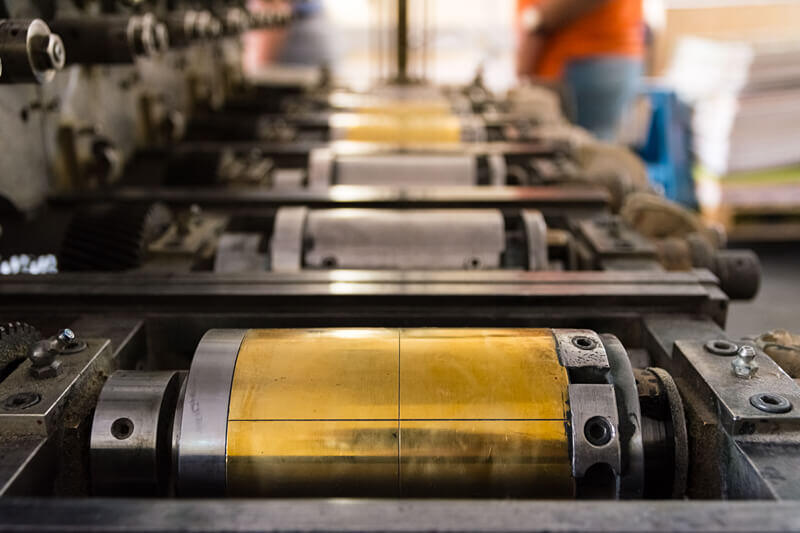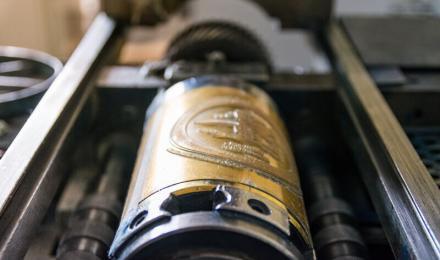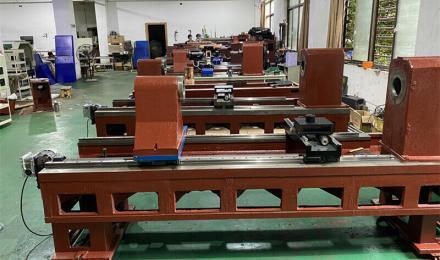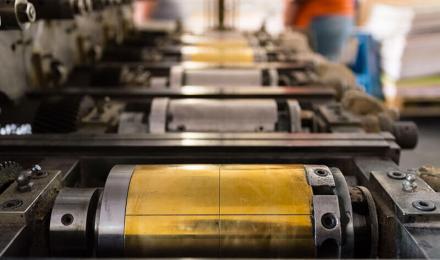Printing Plate Roller: These 5 Points Must Be Done!
As the saying goes, the quality of printed matter is “three points in printing, seven points in plate making.” Therefore, the problem that needs to be paid attention to is the process of printing plate making. For gravure printing plate cylinders, know how to choose and test as it is the premise of quality assurance of printed matter. With these 5 points, you will be able to get it right when it comes to printing plate roller:Gravure Drum
-
Material Selection And Processing
The gravure roller should be selected well. The processing should be refined. The gravure cylinder has an open hollow printing plate cylinder and a closed solid printing plate cylinder. The size of the gravure printing machine determines the length and circumference of the printing plate cylinder. The printed matter also greatly determines the processing.
The production cylinder is best processed directly with seamless steel pipe. Users can see from the inner wall of the finished product. The inner wall of the seamless steel pipe should be smooth and interfaceless.
The processing of plate cylinders is divided into rough processing, semi-finishing, and finishing. The wall thickness of the rough machined cylinder reaches the specified level to ensure that the weight of each part is consistent. The same centrifugal force is generated when engraving and printing rotate.
Semi-finishing is to keep the shaft and the version of the drum concentric, some do not need to machine the shaft parts, but the flange processing on both sides should be the same. Finishing is the outer circle of the fine car version of the drum to bring it to the dimensions specified by the design.
The processing accuracy of the printing plate cylinder is directly related to the service life of the plate cylinder. The electroplating and electroengraving effect of the plate cylinder until the final product printing quality. The processed version of the drum requires uniform wall thickness, and the indicators should meet quality standards.
-
Plate Plating
The electroplating of the printing plate roller should be fine, the copper layer should meet the standard, and the pre-plating treatment should be carried out before copper plating. First, remove the oil stain on the surface of the plate drum by manual or electrolytic method. Then the version drum is pickled, the rust oxide film on the surface of the version drum is corroded with chemical agents, and finally, a layer of bottom nickel is plated on the surface of the version drum.
Then copper plating, copper plating is quite important, the copper layer is the engraving layer of the gravure plate cylinder, and the graphic part of the printed matter is completely carved by an electronic engraving machine on this layer. The quality of copper plating is directly related to the quality of the engraving of graphics and text.
-
Drum Grinding
The grinding process of the version drum is good. Copper-plated plate roller need to grind the surface of the copper layer so that the surface finish of the printing plate roller reaches △8 ~ △10. Only if the grinding is good the finish of the later printing plate roller can be guaranteed. When encountering a large area of flat mesh or excessive mesh. If the surface finish of the copper layer does not meet the requirements, it will be manifested as the printed product having spots, water lines, grinding channels, stubble, and other problems.
Therefore, a lot of attention needs to be paid to the printing plate roller grinding. Depending on the material used for the construction of the roller and other factors. Pay a lot of attention to the setting of the grinding machine to get the best details.
-
Electric Carving Quality
The quality of the electric engraving of the printing plate should meet the standard. In order to ensure the quality of electronic engraving gravure, the industry-standard specifies the size and depth of the engraving mesh. However, the size and depth of the mesh cavity are affected by the model (different companies’ products carved out of the mesh cavity shape is different).
The number of mesh lines, the new and old degree of the engraving needle, the angle of the engraving head, the thickness of the copper layer, and product quality requirements, there are many variables, to 70 lines/cm, the angle of the mesh line is 30 degrees, the use of 120 degrees new engraving needle as an example, the width of the trial carving mesh cavity: the highlight is 34~36um, and the dark tone is 175~178um.
If the black version encounters small text and clues, this value is slightly smaller. Generally, when observed under a magnifying glass, it is absolutely not allowed to have a missing mesh wall. There shouldn’t be an incomplete mesh cavity. If there is, the line is not real; there are imaginary edges, flat net blistering, etc.
-
Chromium Layer Quality
The hardness of copper is generally HV90~180, and the squeegee is easy to scratch the printing plate when printing. Due to the high hardness of metal chromium in HV800~1000, wear resistance is good. So when the printing plate roller graphic production is completed, it is also necessary to plate a layer of chromium on the surface of the copper layer to improve printing resistance.
Chromium loss in printing damages the printing plate and also brings a large amount of waste to the printing plant. Therefore, when inspecting the printing plate roller, special attention should be paid to whether there is a phenomenon of chromium peeling on the plate. Once found to be repaired immediately, it is not available.
In conclusion, with these 5 factors taken into consideration, then the printing plate roller should offer incredible quality output. You should be able to get the best out of the printing process in terms of quality printing. The quality of the printing of printing will also be highly sustainable. This is as long as these points have been observed.






